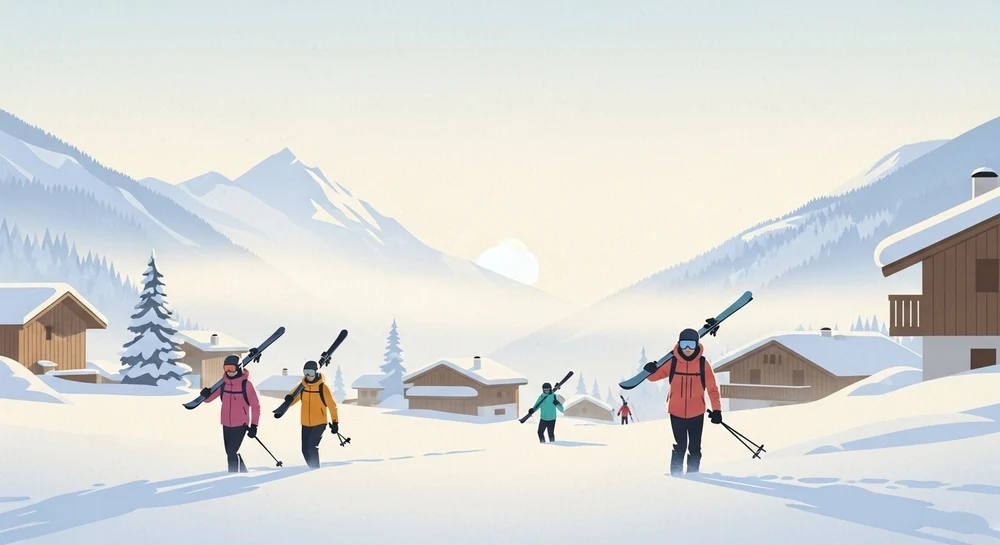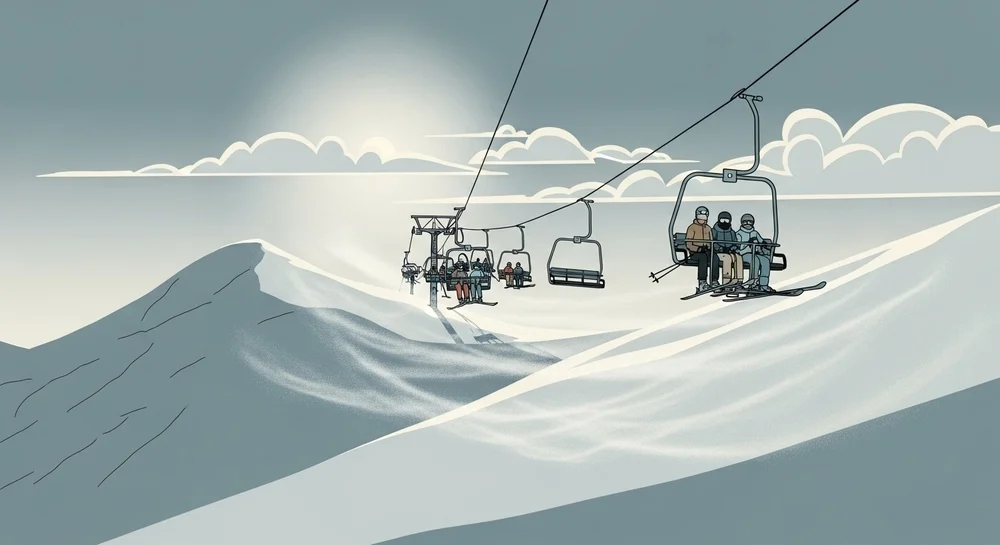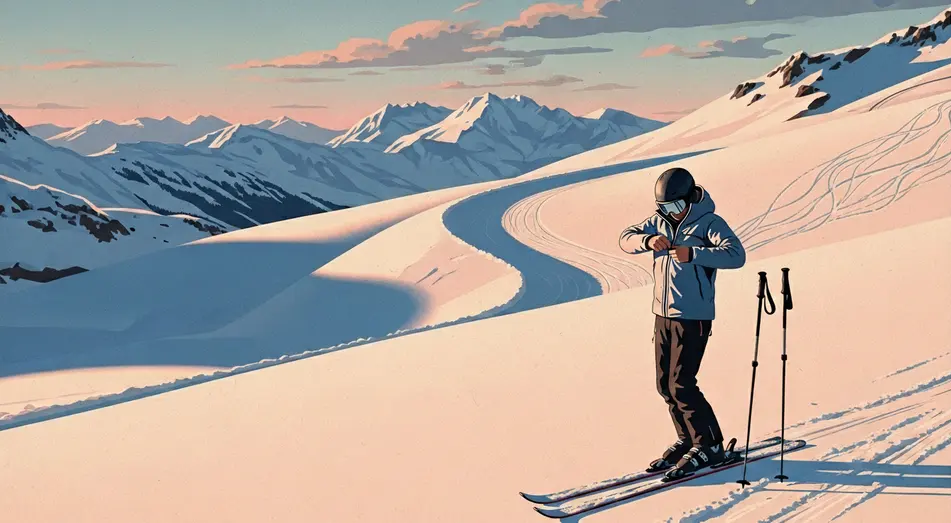How to dress for skiing without freezing or melting
Dressing for skiing sounds simple until you try it. You leave the village wrapped up, shivering in the early cold, then by mid-morning you are sweating at two thousand metres under a bright alpine sun. That is the mountain inversion, the strange feeling of warmth high above while the valley still hides in frost.

Even locals get it wrong. The mountain changes fast. A chairlift ride can feel like a freezer, then one run later you are unzipping everything. When the sun slips behind the ridge, the temperature drops in minutes. The secret is not dressing light, it is dressing smart.
The Three-Layer System
Start with a thin base layer that keeps the skin dry, then a light down jacket or softshell to trap warmth without bulk, and a waterproof shell on top. Good layers breathe and let you adjust easily. Ski jackets and pants with vents hidden under the arms or along the thighs help release heat on warm afternoons and keep things dry when the cold returns. Staying comfortable means staying free to move, to stop, and to enjoy the day rather than fight it.
The Long John Question
The long john question always divides opinion. On cold January days with wind and shade, they are gold. When the sky is blue and the snow sparkles, they can feel too warm. The three-quarter version that ends above the ski boot is often the perfect middle ground.
The Details That Matter
For beginners, the details matter. High socks that protect the shins, waterproof gloves for all the inevitable snow contact, a buff to pull up on windy lifts, and sunscreen, always sunscreen. The mountain sun is silent but sharp.

At Le Tour, the Charamillon chairlift is famous for its wind. The ride up can freeze your face and fingertips, but as soon as you reach the top and glide behind the ridge, the air softens and warmth returns. It is the same mountain, just a different side of it, and the right layers make the difference between enduring and enjoying.

When the light fades and the slopes turn blue, you understand why locals care so much about zips, fabrics, and small details. They are what keep the mountain comfortable, even when it decides to change its mood.